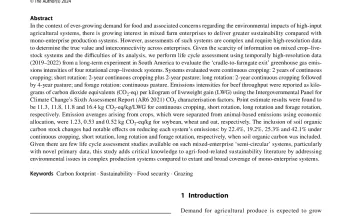Can we identify tipping points of resilience loss in Mediterranean rangelands under increased summer drought?

ABSTRACT.- Mediterranean ecosystems are predicted to undergo longer and more intense summer droughts. The mechanisms underlying the response of herbaceous communities to such drier environments should be investigated to identify the resilience thresholds of Mediterranean rangelands. A 5-year experiment was conducted in deep and shallow soil rangelands of southern France. A rainout shelter for 75 days in summer imposed drier and warmer conditions. Total soil water content was measured monthly to model available daily soil water.

